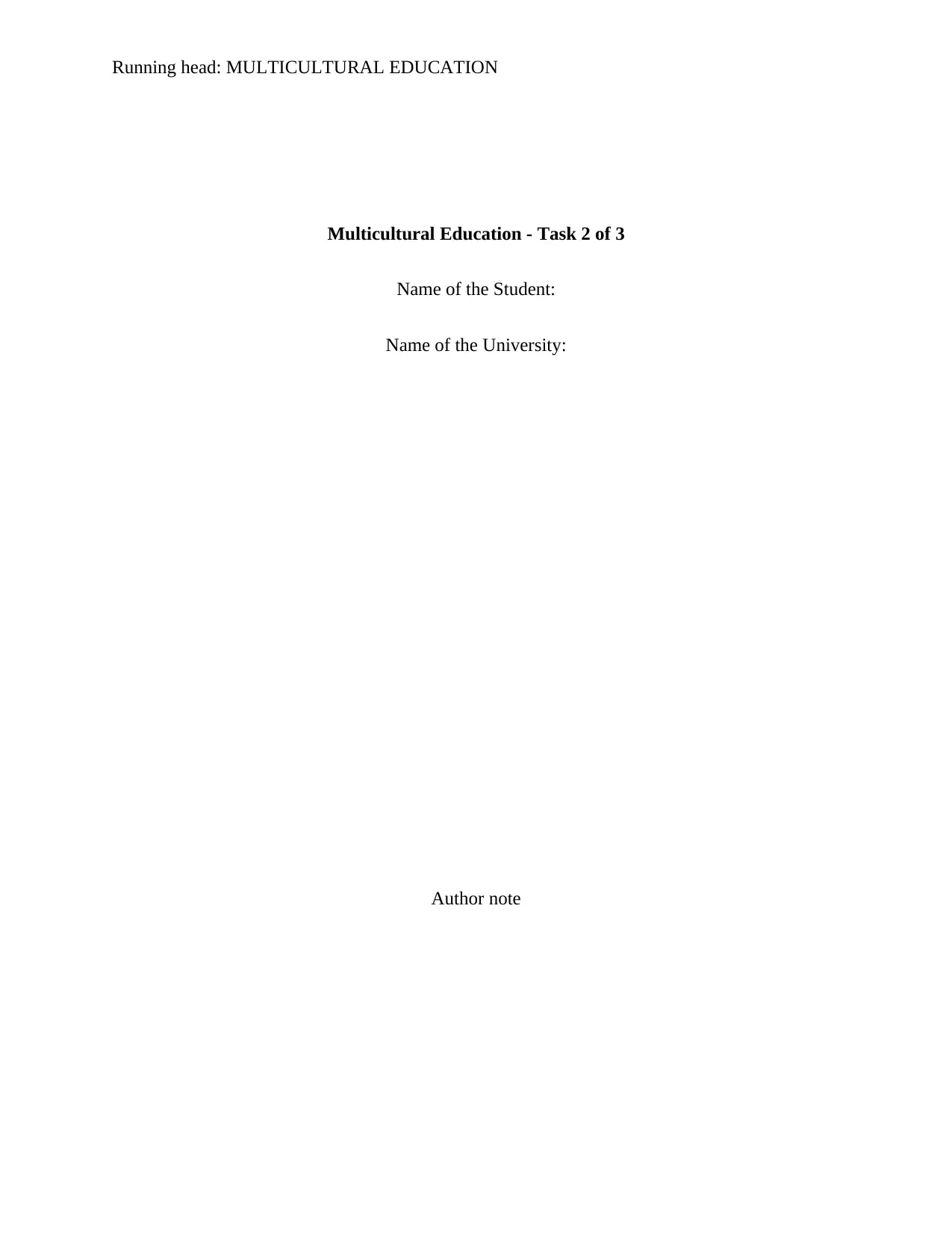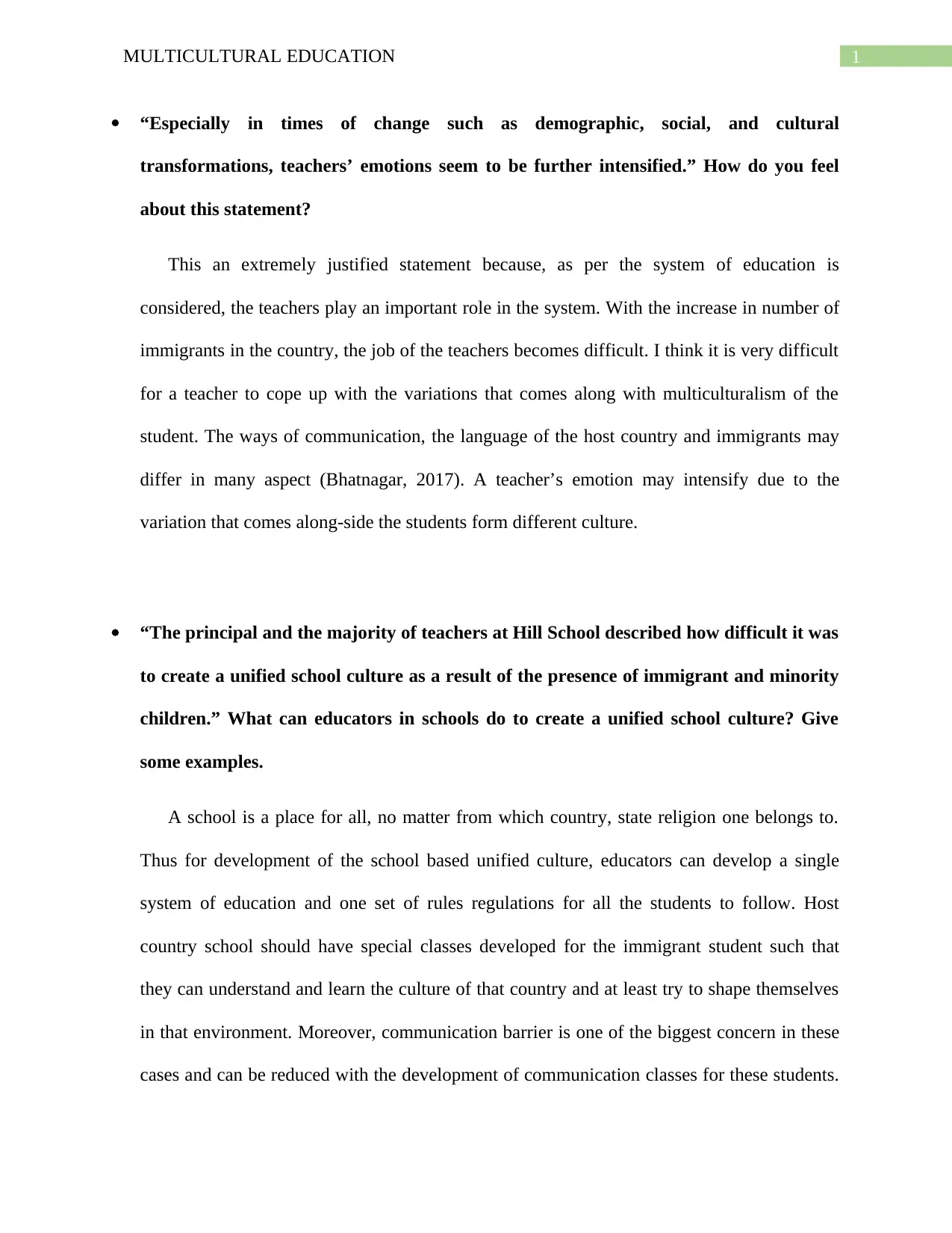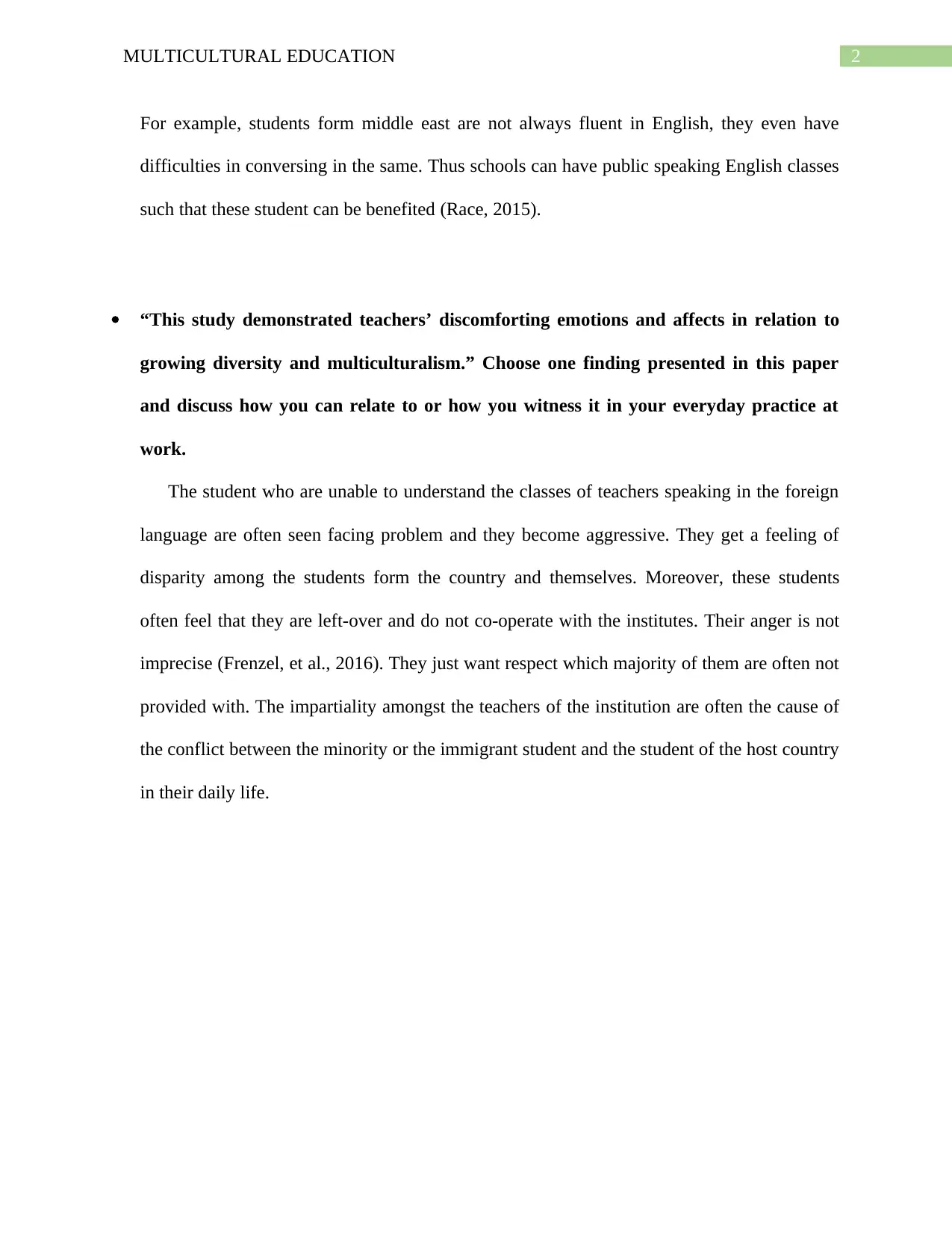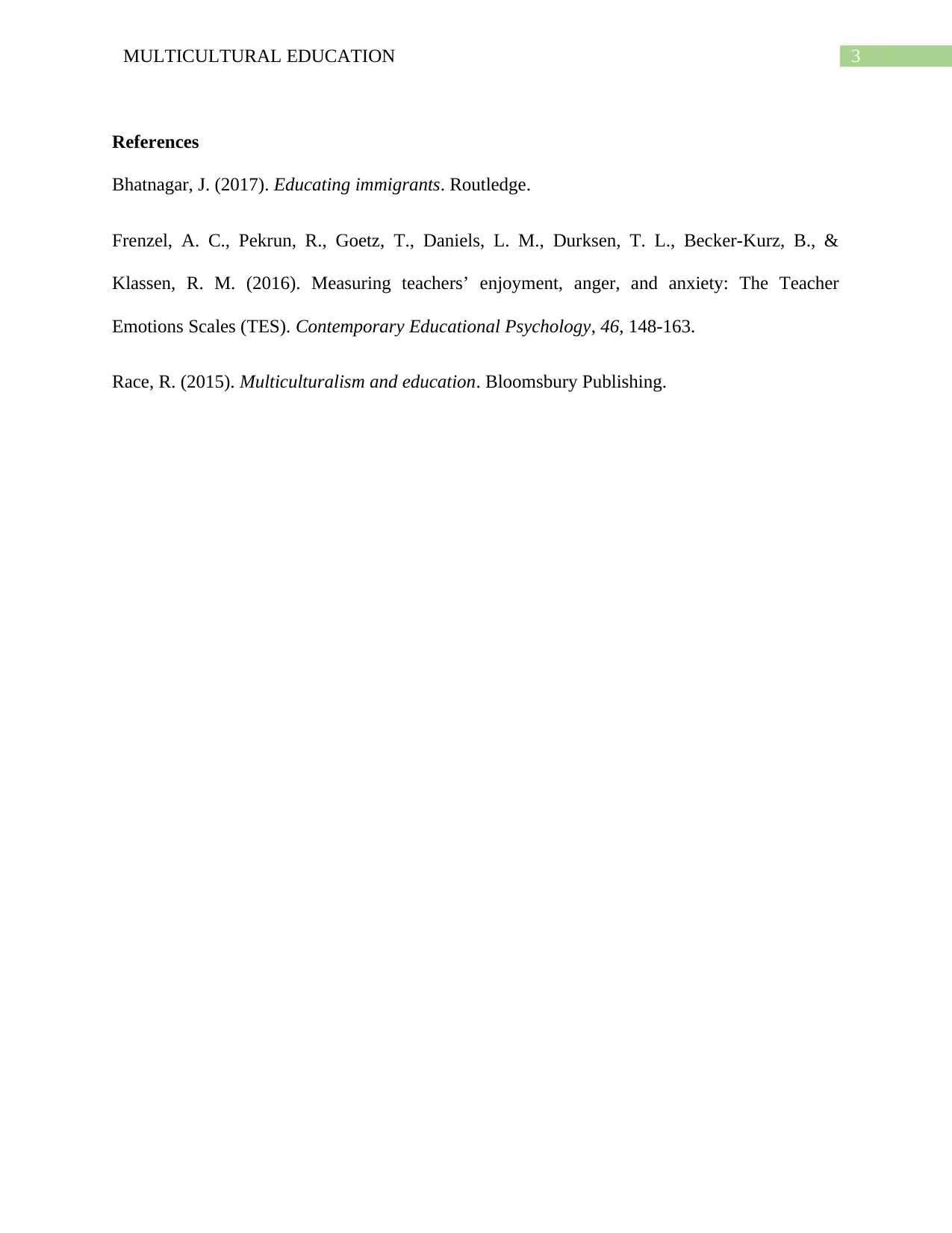Multicultural Education: Teachers' Emotional Experiences Analysis
VerifiedAdded on 2022/09/08
|4
|640
|24
Homework Assignment
AI Summary
This assignment analyzes teachers' emotional experiences within the context of growing diversity and multiculturalism in schools. It begins by addressing the intensification of teachers' emotions in response to demographic and cultural shifts, emphasizing the challenges of managing variations in communication, language, and cultural backgrounds. The assignment further examines strategies for creating a unified school culture, such as establishing consistent educational systems and rules, providing support for immigrant students through language and cultural classes, and addressing communication barriers. Finally, it discusses how teachers' discomforting emotions, such as feelings of disparity among students, can manifest in the classroom, leading to potential conflicts and highlighting the importance of impartiality and respect. The analysis draws on relevant literature to support its claims.
1 out of 4










![[object Object]](/_next/static/media/star-bottom.7253800d.svg)